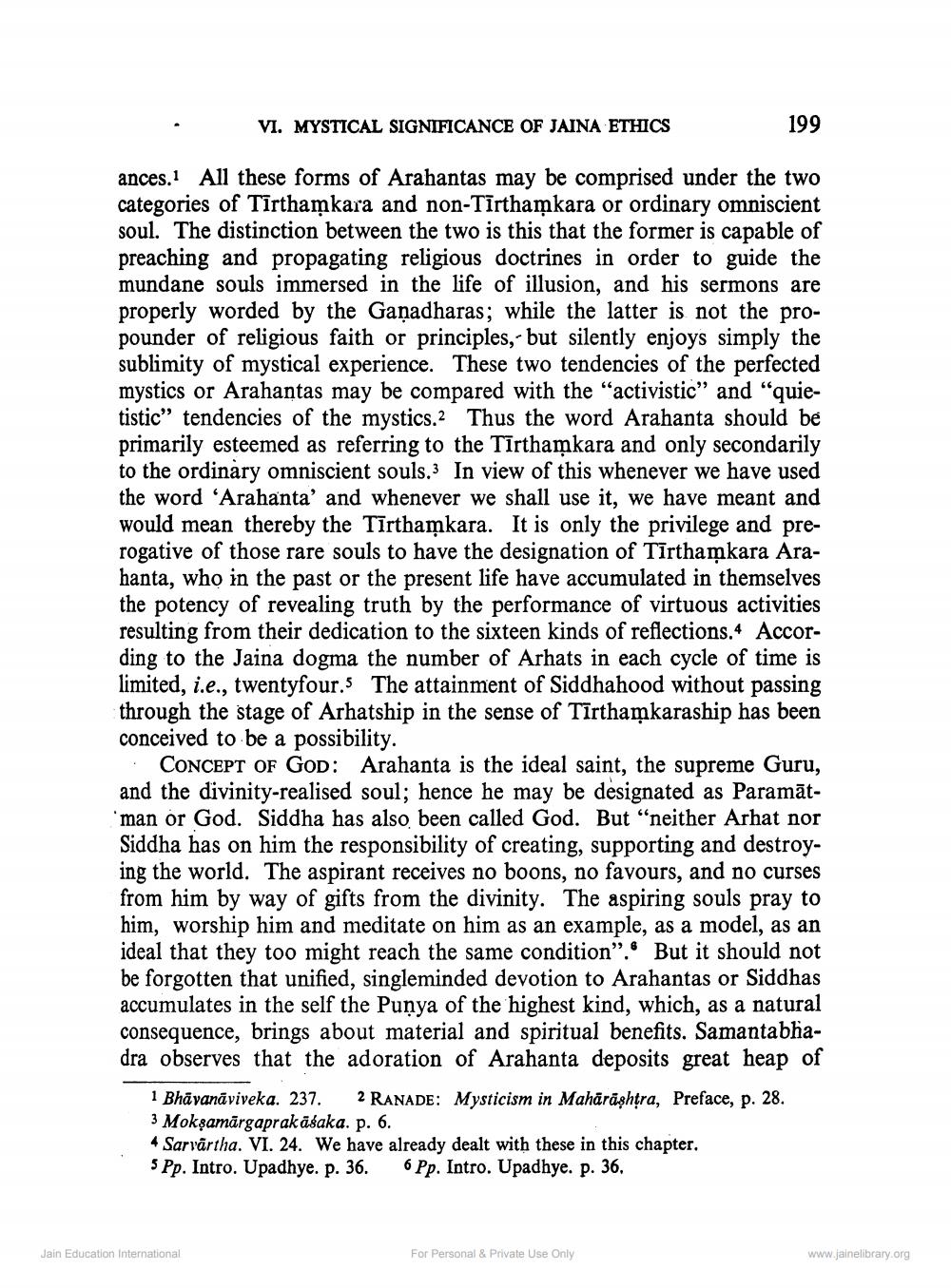________________
VI. MYSTICAL SIGNIFICANCE OF JAINA ETHICS
199
ances. All these forms of Arahantas may be comprised under the two categories of Tirthamkara and non-Tīrthamkara or ordinary omniscient soul. The distinction between the two is this that the former is capable of preaching and propagating religious doctrines in order to guide the mundane souls immersed in the life of illusion, and his sermons are properly worded by the Gañadharas; while the latter is not the propounder of religious faith or principles, but silently enjoys simply the sublimity of mystical experience. These two tendencies of the perfected mystics or Arahantas may be compared with the "activistic" and "quietistic" tendencies of the mystics. Thus the word Arahanta should be primarily esteemed as referring to the Tīrthamkara and only secondarily to the ordinary omniscient souls.3 In view of this whenever we have used the word 'Arahanta' and whenever we shall use it, we have meant and would mean thereby the Tīrthamkara. It is only the privilege and prerogative of those rare souls to have the designation of Tīrthamkara Arahanta, who in the past or the present life have accumulated in themselves the potency of revealing truth by the performance of virtuous activities resulting from their dedication to the sixteen kinds of reflections. According to the Jaina dogma the number of Arhats in each cycle of time is limited, i.e., twentyfour. The attainment of Siddhahood without passing through the stage of Arhatship in the sense of Tīrthamkaraship has been conceived to be a possibility.
CONCEPT OF GOD: Arahanta is the ideal saint, the supreme Guru, and the divinity-realised soul; hence he may be designated as Paramāt'man or God. Siddha has also been called God. But "neither Arhat nor Siddha has on him the responsibility of creating, supporting and destroying the world. The aspirant receives no boons, no favours, and no curses from him by way of gifts from the divinity. The aspiring souls pray to him, worship him and meditate on him as an example, as a model, as an ideal that they too might reach the same condition". But it should not be forgotten that unified, singleminded devotion to Arahantas or Siddhas accumulates in the self the Punya of the highest kind, which, as a natural consequence, brings about material and spiritual benefits. Samantabhadra observes that the adoration of Arahanta deposits great heap of
1 Bhāvanāviveka. 237. 2 RANADE: Mysticism in Maharashtra, Preface, p. 28. 3 Mokşamārgaprakāšaka. p. 6.
Sarvärtha. VI. 24. We have already dealt with these in this chapter, 5 Pp. Intro. Upadhye. p. 36. 6 Pp. Intro. Upadhye. p. 36.
Jain Education International
For Personal & Private Use Only
www.jainelibrary.org




